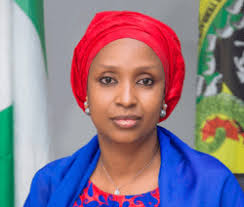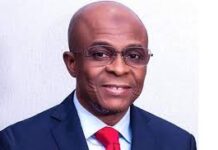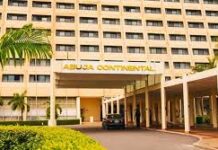There is no doubt that the most common mode of transport in international trade is sea transport, this is as a result of the large amount of cargo that is transported on sea. There are more than 2000 seaports around the world, from the ones with a single berth location handling a few hundreds tons of cargo annually to huge facilities handling about 300 million tons of cargo a year.
More than 80 per cent of trade with origins or destinations in tonnage is water-borne. Ports are emerging more and more into service providers in the execution of trade and the movement of cargoes. This is aimed at enhancing the trade environment and making optimum use of port’s facility.
Smooth flow of maritime cargo not only contributes to greater development of world trade but also seeks to raise the standard of living of the people in whose domains these ports are located. In developed countries, maritime freight cost has been observed to be decreasing in recent years. However, the bulk of maritime freight cost still remains relatively high in developing countries. In most developing countries such as Nigeria, transport cost constitute about 35 per cent of the landed cost of products. Apart from these costs, port service such as speed, reliability, frequencies, safety and security are of increasing concern.
The above is as a result of inefficient maritime and port operations and other issues such as management, logistics and low technological inputs in these ports, giving rise to high over-head cost and low productivity level.
According to the United Nation Committee on Trade and Development (UNCTAD), this inefficiency can be seen in the area of long waiting time at border crossings including ports, inappropriate fees and formalities, and unclear trade and transport rules and regulations can all become serious obstacle to trade and thereby adversely affect investment and job creation.
In most developing countries, importers as well as other port users are faced with varied problem. Excessive dues at entry points at sea ports, low service level, Constant delays, uncertainty and strong bureaucracy are the norms. All these issues can adversely affect products’ channel and trade facilitation. This is because seaports are major points where a significant level of this cost can be seen. Being the case, analysts posit that better port practices and efficiency in port operations can have a significant if not a huge positive effect on stakeholders of seaports. Nigeria is however making efforts to turn things around.
Investing in Infrastructure, equipment
After years of neglect and inconsistent government policies, the current management of the Nigerian Ports Authority (NPA) has invested in equipment and infrastructure to ensure Nigerian ports are efficient and competitive.
In the last four years, the NPA has invested well over $300 million in equipment and infrastructure. For instance, as part of the effort to attract vessels to the eastern ports, the NPA commenced the dredging of Warri port at the cost of $44.861million (N16.150 billion).
The dredging has since been completed and vessels have started calling at the port. Aware of the perennial gridlock in Apapa as a result of increased activity at the Lagos port due to the closure of land borders by the federal government, the NPA partnered with terminal operators to acquire multimillion dollars state-of-the-art Mobile Harbor Cranes MHCs.
Nigeria’s biggest container terminal operator, A. P Moller Terminal Apapa, April this year took delivery of the cranes valued about $80million (N33.6billion), to boost its service delivery at the Apapa Port. The investment brings A.P. Moller total investment by the company in Apapa since 2006 to N184billion ($438million).
In 2018, the NPA deployed equipment worth over $30 million in Onne Port, Rivers State.The measure, which was taken by the Managing Director of the NPA, Hadiza Bala-Usman, was to boost efficiency, security and make the port attractive for business. Onne Port Complex, as one of the key ports under the NPA, also got several equipment to boost activity at the port.
The port is situated on the Bonny River Estuary along Ogu Creek. It was also gathered that six pilot cutters, tug boats and 17-meter offshore patrol boats, have been deployed in the port to make the port attractive and stem the cycle of criminalities within and around the port.
Increasing Tugboats Fleet
That is not all, only recently, the NPA inaugurated two multimillion Dollars tugboats, MT Musawa and MT Ikoro-Ekiti making it six tugboats acquired by the authority since 2017.
Speaking at the inauguration ceremony, Bala-Usman stated that the federal government ongoing investment in port infrastructure would boost maritime sector contribution to the nation’s gross domestic products (GDP).
She added that port infrastructure being built by the government and assets acquired under her leadership are key in improving efficiency at the port as Nigeria look towards improving maritime sector contribution to GDP.
She said: “To achieve our objectives, we need to have tugboats that have capacity for larger and bigger container vessels to come and efficiently berth in our port. We have seen how towage is a critical part, we have recognized stakeholders’ contribution and comments on the need for us to provide the necessary equipment required. So, this is as a result of extended consultation where stakeholders have opined for the Nigerian ports to have the necessary equipment required. This is in addition to what we have and we will continue to provide more vessels as we seek to know what is required for larger vessels to call into our ports.”
She added that for the effective execution of its functions in all port locations, the authority is committed to the continuous upgrade of facilities and equipment that will enhance service delivery.
“This commitment is to ensure that all the six functioning seaports are prepared for optimal performance at all times. This determination accounts for the purchase of these new tugboats, MT Musawa& MT Ikoro-Ekiti joining our other fleet of four namely: MT Daura, MT Ubima, MT Uromi and MT Majiya, which were commissioned in 2017,” she said.
In his speech, the Minister of Transportation, RotimiAmaechi, stated that if anyone was in doubt as to the importance of the maritime sector to Nigerian and global economy, the event of the past three months where ports across the world have remained open in spite of the comprehensive lockdown of virtually other sectors should instruct on why priority attention has to be given to the sector.
“Given government’s determination to develop other sectors of the national economy and reduce reliance on the oil and gas sector, we have identified the pivotal role that the maritime sector occupies in the actualisation of the fundamental objectives of the Economic Recovery and Growth Plan (ERGP) of this administration.
“We understand that not less than 85 percent of the country’s external trade passes through the seaports and are committed to repositioning the ports for greater efficiency. The much talked about transition from a mono-product into a diversified economy is heavily dependent on how robust we can make our maritime space and we are committed to achieving this. As you are aware, work is ongoing on President’s directive that all seaport locations must be linked up to the standard gauge rail line even as we are determined to link up the thirty- six (36) state capitals with the Federal Capital, Abuja with standard gauge rail services.
“I particularly want to commend the NPA for delivering on this project nine month ahead of schedule. This is the kind of efficiency that the administration wants to entrench in the polity and I am happy that we are making progress,”he said.
Improving Towage Services
On May 3, 2017, the NPA inaugurated four new ultramodern tugboats acquired at the cost of $30milion (N9.15billion).
The boats named MT Daura, MT Ubima, MT Uromi and MT Majiya, with 60 tonnes bollard pull capacity, can each be used to tow the new class of ultra large containerships.
The boats have speed of 12.9 knots. They were built at Damen Shipyard, while Rolls Royce built the engines.
Bala-Usman had, while speaking during the inauguration, said the four tug boats would help NPA improve its towage services and thus enhance the nation’s revenue as bigger vessels can now call at the ports.
She added the boats will complement existing ones in NPA fleet to provide enabling environment for smooth and efficient port services.
She said, “With the launch of these four tugboats, we are achieving not only the transport demand but also an enhancement in the required technology operations of towage services in our ports.
“The new tug boats will provide the authority an avenue where we can tug in very huge vessels. A lot of our operators have been concerned about the towage services we are providing so with this new entry in addition to our fleet, we are going to be more efficient in delivering towage services in our pilotage districts.
“A lot of vessels calling in Nigeria will now be comfortable to call because they know that we have good towage capacity.”
Explaining the reasons behind the naming of the tug boats, the NPA boss said: “We identified towns and communities where leaders that had led Nigeria emerge from. So that is what informed the naming of these vessels.”
“Now we have a total of nine tug boats. We are going to look at the requirement across the respective zones and deploy them accordingly,” she said.
The NPA boss said the organisation has been fulfilling its obligations to provide 13.5 metres depths at the Lagos channel under the management of Lagos Channel Management Company (LCM). She further stated that about 100 critical wrecks have been removed in Lagos channels since the partnership with LCM began ten years ago.
























